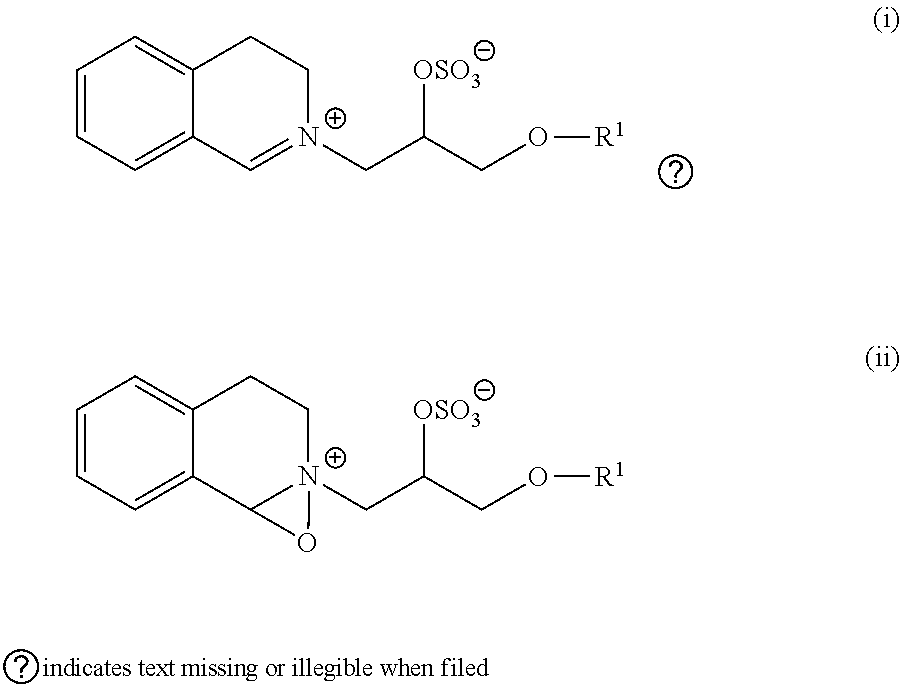Use of Polypeptide
a polypeptide and polypeptide technology, applied in detergent compositions, detergent compounding agents, enzymology, etc., can solve the problems of static electricity, static electricity can be a problem, and electric charge imbalance on the surface of a material,
- Summary
- Abstract
- Description
- Claims
- Application Information
AI Technical Summary
Benefits of technology
Problems solved by technology
Method used
Image
Examples
example 1
Preparation of DNA Stained Textile
[0491]To prepare DNA stained textile swatches, called “DNA swatches”, dissolve DNA in sterile MilliQ water to make a 5.0 mg / mL solution and place in fridge at 5° C. overnight to let the DNA dissolve. Make dilutions of the DNA solution to e.g. 0.5, 1.0 or 2.5 mg / mL in sterile MilliQ water. Place up to 6 circular textile swatches with a 2 cm diameter in a sterile petri dish and apply 100 μL DNA solution of the chosen concentration to each textile swatch and leave them in the petri dish without lid overnight or until dry. To re-apply DNA to washed DNA swatches wait until the washed DNA swatches are dry and apply 100 μL DNA solution of the chosen concentration to each textile swatch and leave them in the petri dish without lid overnight or until dry.
MiniLOM Wash:
[0492]Prepare 1 L 15° dH water by pipetting 3.00 mL of 0.713 mol / L CaCl2, 1.50 mL of 0.357 mol / L MgCl2 and 0.3371 g of NaHCO3 into a 1 L measuring cylinder, fill up to 1 L with MilliQ water and ...
example 2
[0501]Below the invention is illustrated by examples. In the examples below all percentage contents are given in weight. Fabric softening composition A, B and C are prepared with and without DNase added. The DNase (SEQ ID NO: 2) are added in concentrations 0.0004 ppm, 0.004 ppm. 0.04 ppm and 0.5 ppm.
[0502]Fabric softening composition A in the form of diluted liquid consist of 7% Esterqut solution, 0.5% silk proteins and 1% perfume composition, and 0.01% colorants. The composition also contains 20 ppm nanoparticles silver preparation with trade name Nano-Silver and water in the amount completing up to 100%. As perfume compositions can be selected from optional perfume products compatible with the composition depending on the concretely made scent. Also the used colorants depend on desired color of the fabric softener.
[0503]Fabric softening composition B in the form of concentrate consist of 50% Esterqut solution, 4% cashmere protein and 5% perfume composition, and 0.1% weight coloran...
example 3
[0505]The following are non-limiting examples of the fabric care compositions of the present invention.
EXAMPLE(% wt)IIIIIIIVVVIVIIVIIIIXDHC a1254216.155DHC b74551DHC c410551 Deposition1.251.252.000.751.440.420.250.50.70Aid dPerfume1.501.501.501.501.500.600.601.300.8-1.5Suds————————0.1 Suppressor fDTPA g0.0050.0050.0050.0050.0070.0020.0020.20—Preservative5555555—250 i (ppm) hAntifoam j0.0150.0110.0110.0110.0110.0150.015——Dye4040404040303011 30-300(ppm)DeionizedBalanceBalanceBalanceBalanceBalanceBalanceBalanceBalanceBalanceWaterFabric softening compositions I to IX are prepared with and without DNase added. The DNase (SEQ ID NO: 2) are added in concentrations 0.0004 ppm, 0.004 ppm. 0.04 ppm and 0.5 ppm.a mono-hydrocarbyl amido quaternary ammonium compound described in claim 1 of WO2011 / 011247, where the di-hydrocarbyl amido complex having a C12-C14 anionic component and a cationic component having R1 of C16-C18.b mono-hydrocarbyl amido quaternary ammonium compound described in claim...
PUM
 Login to View More
Login to View More Abstract
Description
Claims
Application Information
 Login to View More
Login to View More - R&D
- Intellectual Property
- Life Sciences
- Materials
- Tech Scout
- Unparalleled Data Quality
- Higher Quality Content
- 60% Fewer Hallucinations
Browse by: Latest US Patents, China's latest patents, Technical Efficacy Thesaurus, Application Domain, Technology Topic, Popular Technical Reports.
© 2025 PatSnap. All rights reserved.Legal|Privacy policy|Modern Slavery Act Transparency Statement|Sitemap|About US| Contact US: help@patsnap.com

